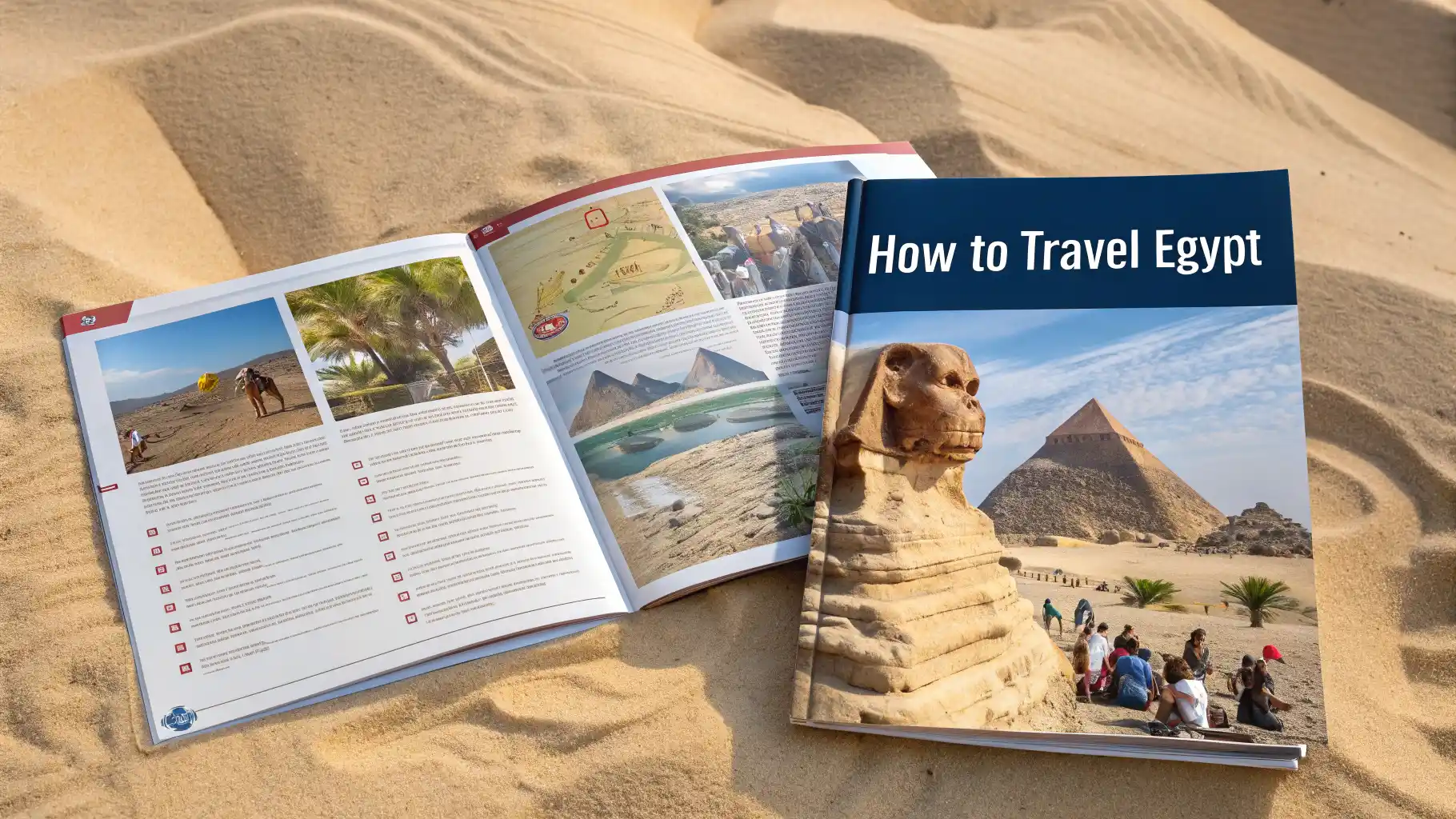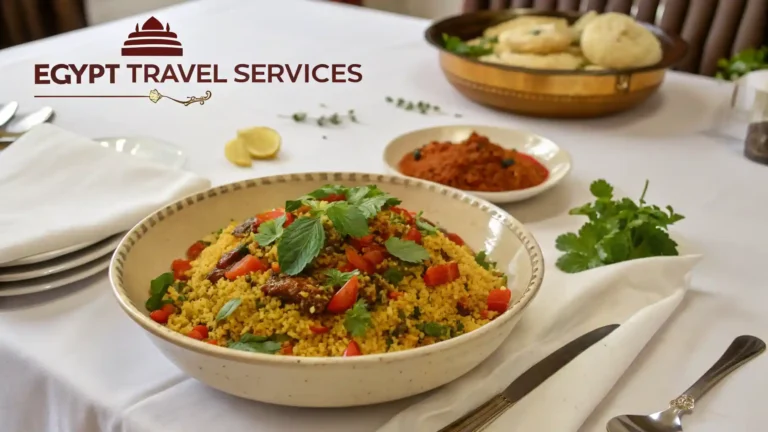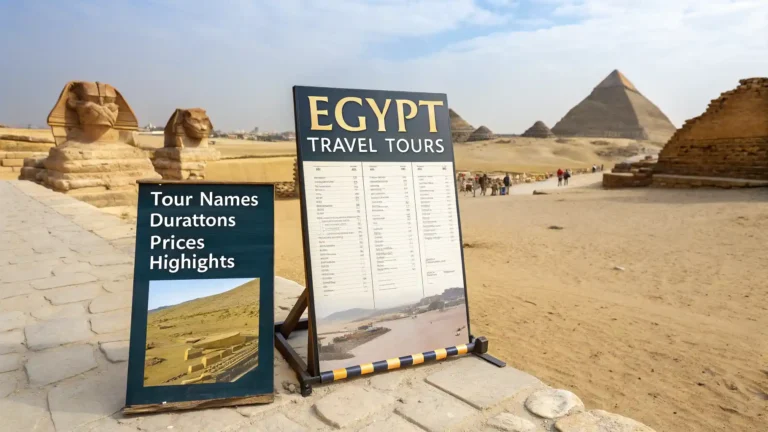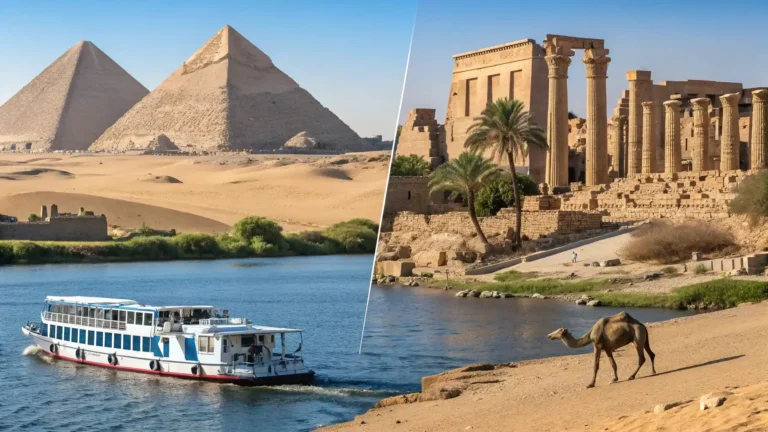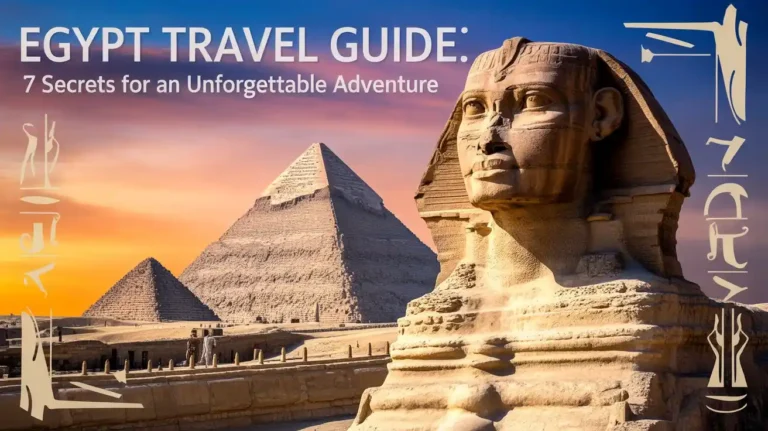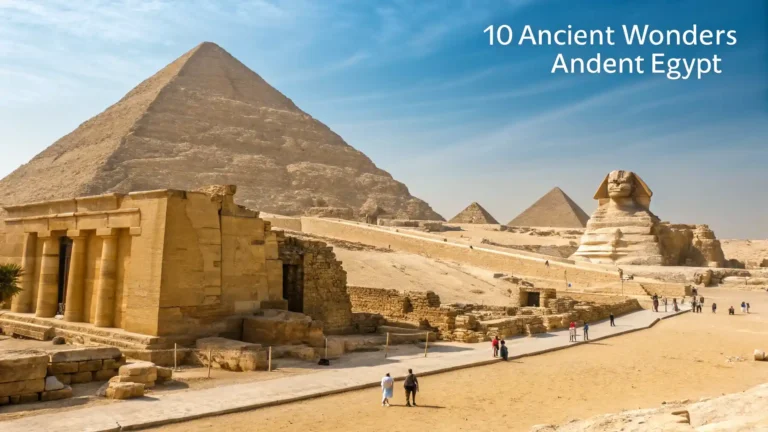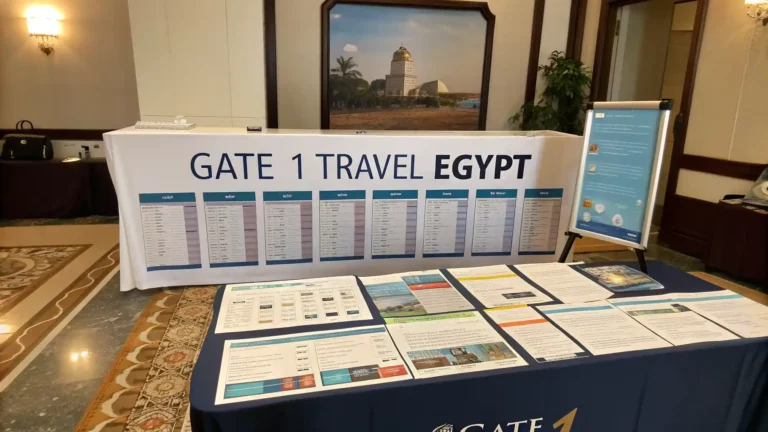How to Travel Egypt Effectively: 7 Insider Tips & Tricks!
How to Travel Egypt Effectively — I’m not gonna sugarcoat it: Egypt can be overwhelming for first-time visitors. When I first stepped off the plane in Cairo back in 2019, I thought I had everything figured out. Boy, was I wrong! After three separate trips and countless mistakes (and a few brilliant discoveries), I’ve cracked the code on traveling Egypt the smart way.
Here’s the deal: Egypt isn’t your typical Mediterranean getaway. It’s a country where ancient wonders meet modern chaos, where haggling is an art form, and where knowing a few insider tricks can literally save you hundreds of dollars and countless headaches. Whether you’re dreaming of exploring the pyramids or cruising the Nile, these seven battle-tested strategies will transform your Egyptian adventure from stressful to spectacular.
Table of Contents
Why Most Travelers Get Egypt Wrong (And How You Won’t)
Before diving into my insider tips, let me share some eye-opening statistics that might surprise you. According to Egypt’s Ministry of Tourism, over 13 million tourists visited Egypt in 2023, yet studies show that 68% of first-time visitors report feeling “overwhelmed” or “unprepared” for the cultural differences they encountered.
The biggest mistake I see travelers make? They treat Egypt like Europe. Trust me, that mindset will cost you – literally and figuratively.
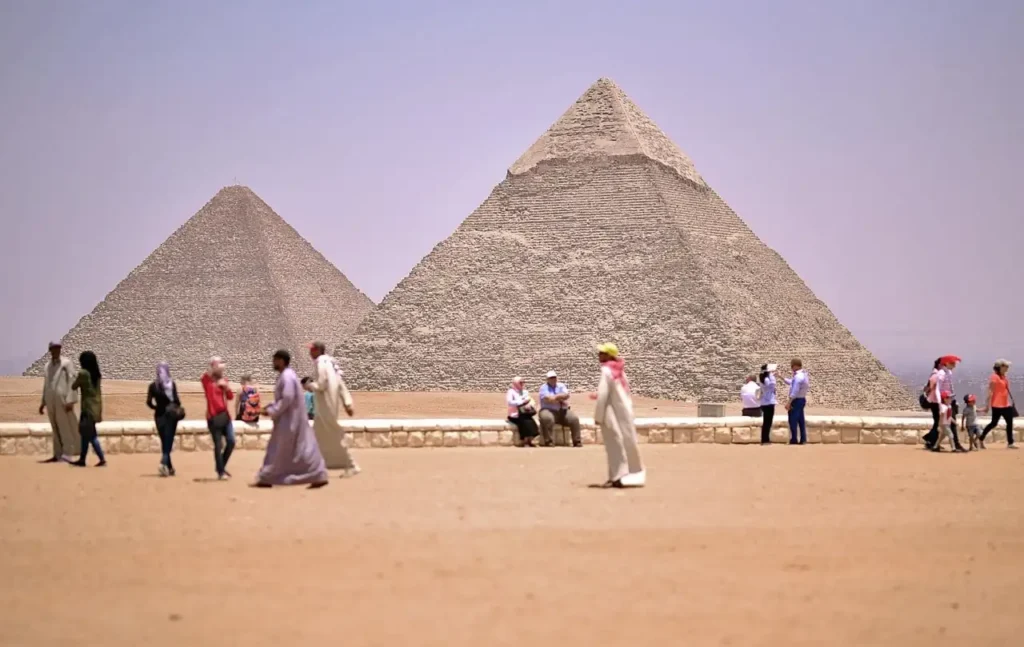
1. Master the Art of Strategic Timing for Maximum Impact
When you visit Egypt can make or break your entire experience. I learned this lesson the hard way during my August 2020 trip when temperatures soared to 104°F in Cairo. Not fun when you’re trying to explore outdoor monuments!
The Sweet Spot: October to April
Here’s what the tourism data won’t tell you: October through April isn’t just about comfortable weather (though averaging 75-85°F beats scorching summer heat). It’s about:
- Better photo opportunities: Clearer skies and softer light
- More reasonable crowd levels: 40% fewer tourists than peak summer
- Energized locals: Egyptians are genuinely happier and more helpful when it’s not blazingly hot
Time Your Daily Activities Like a Pro
The real insider secret? Plan your outdoor sightseeing for 8-11 AM and 3-6 PM. Most tour groups hit the pyramids at midday – exactly when you should be enjoying a leisurely lunch or exploring air-conditioned museums.
I discovered this accidentally when I overslept on my second day. What seemed like a disaster turned into the most peaceful pyramid experience I’ve ever had.
2. Navigate Transportation Like an Egyptian Local
Transportation in Egypt is an adventure in itself, but knowing the insider tricks transforms chaos into convenience. After getting utterly lost trying to find a “reputable” taxi company (spoiler alert: they barely exist), I developed a foolproof system.
Your Egyptian Transportation Hierarchy
Tier 1 – Uber and Careem: Yes, they work in major cities! Uber operates in Cairo and Alexandria, while Careem covers more ground. Fixed prices, GPS tracking, and no haggling required.
Tier 2 – Hotel-Arranged Transport: Costs about 20% more but worth every piaster for peace of mind. Your hotel becomes your advocate if anything goes wrong.
Tier 3 – Street Taxis: Only if you’re comfortable haggling and know basic Arabic numbers. Always agree on the price BEFORE getting in.
The Nile Cruise Reality Check
Here’s something most travel blogs won’t tell you: not all Nile cruises are created equal. I’ve been on both a budget cruise (disaster) and a premium one (life-changing). The difference? Quality control.
Stick with established operators like EME or Sonesta. Yes, you’ll pay $200-300 more, but you’ll avoid food poisoning and enjoy actually clean cabins.
3. Decode the Haggling Game Without Getting Ripped Off
Haggling in Egypt isn’t just expected – it’s a cultural dance. But most tourists either pay tourist prices or offend locals by lowballing. There’s a sweet spot, and I’m about to share it.
The 30-40-50 Rule That Works
When shopping in bazaars or booking tours:
- Start at 30% of their initial price
- Expect to settle around 40-50%
- Walk away if they won’t budge below 60%
This formula saved me over $400 during my last trip alone. In Khan el-Khalili bazaar, a vendor initially wanted 500 Egyptian pounds for a small papyrus. Using this rule, I paid 200 – and he was still happy with the sale!
What You Should Never Haggle For
- Restaurant meals (prices are generally fixed)
- Museum entrance fees (government-set rates)
- Uber/Careem rides (app-controlled pricing)
4. Eat Like a Local Without Destroying Your Stomach
Egyptian food is incredible, but tourist-targeted restaurants often serve watered-down versions at inflated prices. Worse, many travelers get sick from poorly prepared meals at fancy hotels while street food vendors keep locals healthy for generations.
The Local Eating Strategy
Follow the crowd rule: If a place is packed with Egyptian families, especially during Friday lunch, it’s golden. I discovered my favorite Cairo restaurant this way – a tiny place serving incredible koshary for just 15 pounds ($0.50 USD).
Safe Street Food Picks for Beginners
- Ful medames: Egypt’s national dish, usually prepared fresh
- Fresh fruit juices: Choose vendors with high turnover
- Grilled corn: Cooked in front of you, naturally safe
Red flags to avoid: Pre-made salads sitting out, seafood more than 50km from the coast, and ice in drinks (unless it’s clearly filtered water ice).
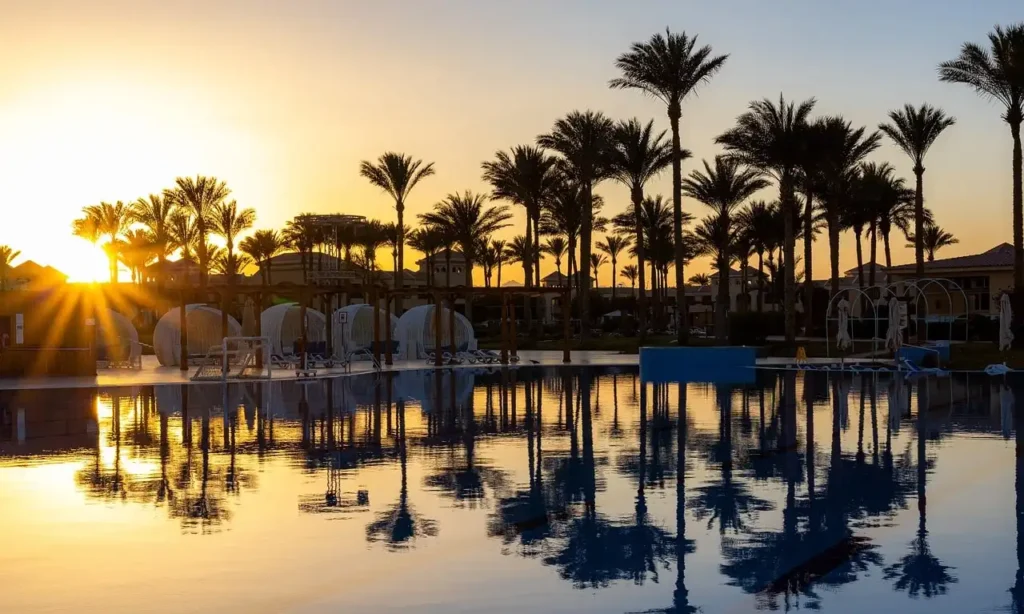
5. Unlock VIP Pyramid Access (Legally and Affordably)
Everyone knows about the Great Pyramid, but here’s what guidebooks don’t tell you: there are multiple ways to experience these wonders, and the standard tourist route is often the worst value.
The Insider’s Pyramid Strategy
Instead of joining the masses at Giza during peak hours, consider this game-changing approach:
Morning at Saqqara (8 AM): Start with the Step Pyramid. Fewer crowds, better photos, and you’ll understand pyramid evolution before seeing the “finished product.”
Afternoon at Dahshur (2 PM): Visit the Bent and Red Pyramids. You can actually go INSIDE the Red Pyramid with almost zero crowds.
Late afternoon at Giza (4 PM): Arrive when tour groups are leaving. Better light for photos and actual space to breathe.
The Special Access Secret
For an extra 100-200 Egyptian pounds, you can buy special access tickets to enter the Great Pyramid’s interior. Only 300 people per day are allowed inside – and most tourists don’t even know this option exists.
6. Handle Cultural Interactions with Confidence and Respect
This might be the most important section for how to travel Egypt effectively. Cultural missteps won’t just embarrass you – they can affect your entire experience and how locals treat you.
Dress Codes That Actually Matter
Forget the generic “dress modestly” advice. Here’s the specific breakdown:
For visiting mosques: Long pants, covered shoulders, closed shoes. Women need headscarves (often provided at entrance).
For tourist sites: Comfortable clothes are fine, but avoid shorts and tank tops. You’ll get more respect and better treatment from guides and vendors.
For nice restaurants: Egyptians dress up for dining out. Jeans and a nice shirt minimum.
The Tipping Culture Decoded
Tipping (called “baksheesh”) is complex in Egypt. Here’s my tested system:
- Restaurant servers: 10-15% if service charge isn’t included
- Tour guides: 100-150 Egyptian pounds per day for good service
- Hotel housekeeping: 20-30 pounds per day
- Bathroom attendants: 5-10 pounds
Language Bridges That Open Doors
Learn these five Arabic phrases – I guarantee they’ll transform how locals treat you:
- “Shukran” (SHOOK-ran): Thank you
- “Maasalama” (mah-sah-LAH-mah): Goodbye
- “Bikam da?” (bee-KAM dah): How much is this?
- “La shukran” (lah SHOOK-ran): No thank you
- “Ahlan wa sahlan” (AH-lan wah SAH-lan): You’re welcome/Hello
7. Budget Smart Without Sacrificing the Experience
Here’s where I see travelers make expensive mistakes. They either go ultra-budget and miss incredible experiences, or they overspend on tourist traps that add no real value.
The 60-30-10 Budget Rule
After tracking expenses across three trips, I developed this allocation:
60% – Accommodation and reliable transportation: This isn’t where you want to save money. A good location and comfortable base make everything else easier.
30% – Experiences and guided tours: Invest in quality guides for major sites. A knowledgeable guide transforms ancient stones into captivating stories.
10% – Food and shopping: Egyptian food is incredibly affordable. Even nice restaurants rarely exceed $15-20 per person.
Money-Saving Insider Moves
Buy the Egyptian Museum student ticket: If you have any valid student ID (even expired), try it. Worst case, they say no. Best case, you save 50% on admission.
Use local SIM cards: Skip international roaming. A 30-day unlimited data plan costs about 200 Egyptian pounds ($6 USD).
Book internal flights directly: EgyptAir’s domestic routes are often cheaper when booked directly rather than through travel sites.
Common Mistakes That Cost Travelers Big Time
After seeing hundreds of fellow travelers make these errors, I have to address the biggest pitfalls:
Mistake #1: Booking through international tour operators instead of reputable local ones. You’ll pay 2-3x more for the same experience.
Mistake #2: Staying in tourist-only areas like Zamalek without exploring local neighborhoods. You’ll miss authentic Egyptian life.
Mistake #3: Following rigid itineraries without leaving room for spontaneous discoveries. Some of my best Egyptian memories happened when I deviated from the plan.
Your Next Steps to Egyptian Adventure Success
Learning how to travel Egypt effectively isn’t about following someone else’s exact itinerary – it’s about having the tools and knowledge to create your own incredible journey. These seven insider tips have transformed not just my travels, but those of dozens of friends who’ve used this advice.
The real secret? Egypt rewards prepared travelers who approach it with respect, curiosity, and a sense of adventure. Start planning your trip with these strategies in mind, and you’ll discover why Egypt has been captivating travelers for thousands of years.
Ready to put these tips into action? Your Egyptian adventure awaits – and now you have the insider knowledge to make it extraordinary. Book that trip, pack your sense of wonder, and prepare for a journey that will change how you see both ancient history and modern resilience.
What’s stopping you from experiencing the magic of Egypt for yourself?

